Destiny Review
Destiny
Our final, final verdict on Destiny
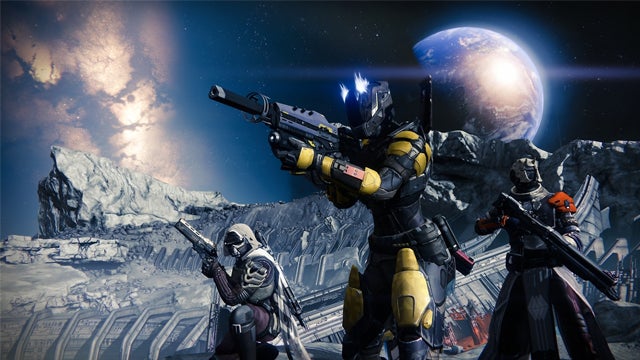
Verdict
Pros
- Hybrid FPS/MMO approach works brilliantly
- Exciting Halo-style combat
- Absorbing character progression
- Seamless co-op multiplayer
Cons
- Narrative elements should be stronger
- Missions can feel formulaic
Key Specifications
- Review Price: £40.00
Update: Destiny 2 has since launched
Available for PS4 (tested), Xbox One, PS3 and Xbox 360
Final Review – Published 17/09/2014
With all story missions completed and just one Strike mission to polish off, we’re now in a stronger position for a definitive Destiny verdict. Of course, with Destiny there’s no such thing; so much depends on how you play it and who you play it with, and also on what Bungie does from here on in. It’s pretty much inevitable that we’ll keep coming back to Destiny, partly because it’s too good to ignore, and partly because we need to see where Bungie takes it next.
The final sections of the game contain some of Destiny’s best moments, though also a handful of those increasingly tiresome ‘let’s pretend to guard but really ignore Ghost while he does something or other with a terminal’ bits. It’s also let down by a tough but slightly anti-climactic final boss battle where you effectively tackle the same git three times – hardly the stirring climax Bungie gave us in Halo: Reach.
If you’re already moaning about the formulaic mission structure, then the last Mars missions won’t change your mind, but with some demanding battles, atmospheric locations and the best guns and gear you’ll have found so far in the game, we still found it enthralling.
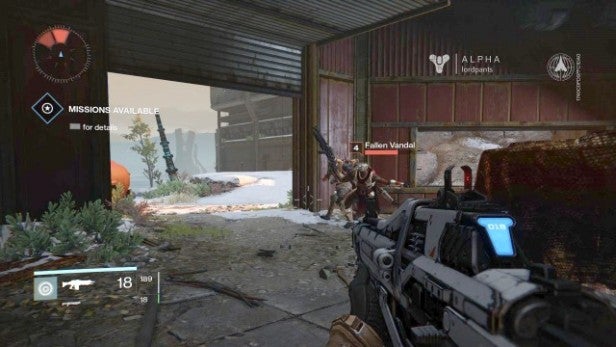
We’re still only getting started in the endgame, but Bungie’s promise that the best is yet to come doesn’t quite ring true. With the story missions finished – though always open to a revisit at higher difficulty levels – you’re left with patrol missions, the Crucible, and a whole lot of Strike. Beyond the regular Strike missions you’ll find Strike playlists – a handful of Strike missions with bonus rewards – and weekly Heroic Strikes; basically the same strikes, but with the difficulty set to Hard and the Heroic modifier added. To match this there’s a daily Heroic Story mission, plus more challenging public events within the open maps.
On the one hand there’s a lot of content here even once you’ve finished the story or reached level 20. On the other hand, a lot of it is roughly the same content that you’ve already explored. This isn’t necessarily a major shortfall; we can’t say enough that replaying chunks of Destiny is never a chore, particularly with different people or with the difficulty level ramped up. Yet all those claims of a rich and varied endgame experience don’t quite stack up at the moment.
See also: Destiny tips and tricks
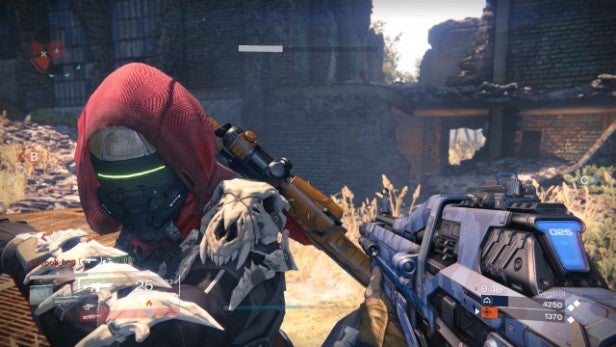
To keep you coming back, Bungie has made the level cap as soft as they come. For a start, even once you’ve hit the level cap you can still keep collecting more gear, while growing more powerful. You’ll still unlock new and more potent capabilities, plus weapon unlocks, bounties and engrams.
You can also keep levelling by collecting ‘Light’, which comes attached to certain pieces of legendary gear. If you’re lucky you might be gifted with these, but you can also buy them, either by earning Vanguard marks through Strike playlists or Crucible marks through competitive play. You can also take on work for other parties within the Tower, though the game doesn’t exactly make it clear how or why. It’s a game in urgent need of an endgame-specific FAQ.
Just as importantly, this isn’t the end. The first Raid has just gone live, promising a more challenging, deeper version of Strike missions aimed at six higher-level players, though as you have to find five players beyond level 26 to play it with, you might struggle to get to it for a while. Next week we’ll see the first timed event, with new missions, new bounties and new weapons to unlock.
See also: Xbox One vs PS4
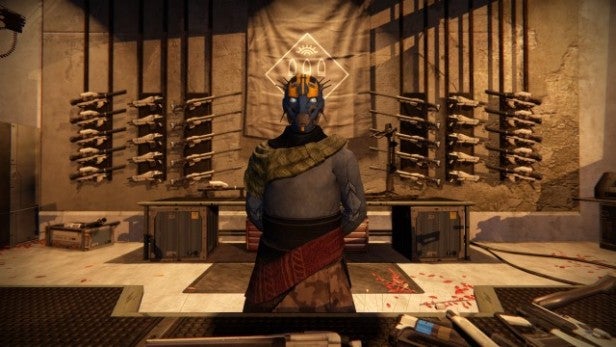
If Bungie wants to ensure that Destiny lives on once the story mode is conquered, then it needs to keep putting new content out there, and more variations on the same few themes won’t do. Similarly, much will depend on upcoming expansions. Give us new experiences, new locations, new enemies and new gear and we’ll happily keep coming back to this universe. And if Bungie can throw in a slightly more coherent and engaging storyline, then that would be the icing on the cake.
Has Destiny proven itself as the future of gaming? Maybe not. There’s a nagging sensation that Bungie has got all the mechanics right, but is still struggling to make a game that works both as a shared experience and as a compelling FPS adventure. Yet while Destiny doesn’t have the narrative flair of Bungie’s Halo games, it makes up for it in the excellence of its FPS action and the Diablo-like flow of its gameplay, pushing you onwards, upwards, and through the next bunch of enemies towards your next reward. Even after all these hours, we can’t wait to go back in. If that’s not the sign of an excellent game, what is?
Verdict
Destiny has its shortcomings, but the overall experience is just a whisker away from living up to the hype. It doesn’t have the breadth or depth of a proper MMORPG, and it remains to be seen whether Bungie’s promise of a rich and long-lasting endgame hold any water. Yet by combining addictive FPS action with some of the trappings of an MMO, Bungie has forged a horribly compulsive hybrid, and once Destiny has its teeth in you, it’s really, really hard to break loose. The storytelling sometimes fall flat while the missions can grow formulaic, but no other shooter works so well as a shared adventure, or gives you quite the same feeling of ownership over your hero. Forget the whiners – embrace your Destiny. Build a legend.
See also: Minecraft tips and tricks

Initial Review – Published 11/09/2014
The Destiny backlash has already begun. Some have played a small portion of the game and come away unimpressed, describing it as a mediocre shooter with MMO pretensions. Others say it’s fun but over-hyped and hollow, lacking the humour of the Borderlands games and the narrative punch that made Halo great. And as with any big blockbuster these days, you’ll always find a clutch of gamers lurking in the corner, shrugging their shoulders and dishing out the verdict: ‘meh’. Has Destiny lived up to the hype?
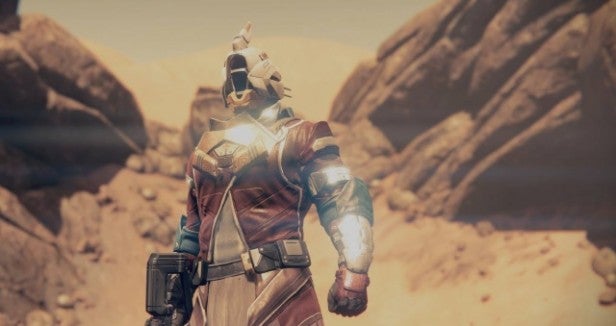
These Destiny naysayers have a handful of good points. Destiny has a rich universe and a proper storyline, but it’s all a little too opaque and understated. You feel that Bungie was so keen to avoid flooding you with cut-scenes and background lore that it hasn’t given you quite enough to work with, or get worked up about. For a game that’s establishing a whole new universe, that’s a concern.
Nor does it help that your only speaking companion through most of the game is your Ghost, voiced by Peter Dinklage in a way that walks a knife-edge between deadpan droll and bored with a touch of C-P3O. Maybe there was only so much he could do with the script, but comparisons to Jen Taylor’s work with Cortana in the Halo series don’t flatter the Game of Thrones star.
And the gameplay, while polished, isn’t perfect. Destiny’s missions see you revisiting the same areas several times, and you’ll get pretty familiar with most locations in the free-form Patrol missions. Throw in some regularly-repeated mission structures, and it’s not hard to see why some players are so downbeat.
See also: Wildstar Tips and Tricks
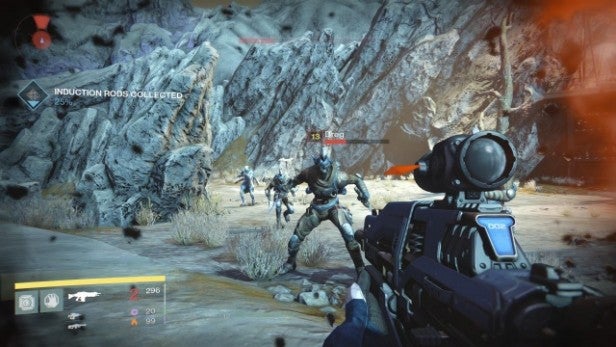
Yet here’s the thing: over three days I’ve already put around twenty hours into Destiny, and I’ve only rarely come close to feeling tired of it. For the vast majority of that time, it’s been enthralling; the kind of game you hate to tear yourself away from, and where you come back excited and energised about what’s next.
Much has been made about the way Destiny merges the FPS and MMORPG genres, but in taking what works from the likes of World of Warcraft and Guild Wars and mixing it with a Halo-esque combat style, Bungie has created a brutally effective hybrid – one that soaks up time and energy with the kind of verve you’d expect from an Elder Scrolls or Diablo III.
The first few hours in Old Russia may be too familiar to anyone who’s experienced the alpha and/or beta, as the game establishes your role as one of the Guardian’s defending Earth’s last city, and the wider fiction about The Traveler, the Darkness, the Collapse and first two of Destiny’s enemy races: The Fallen and The Hive. You’ll find yourself levelling up fairly rapidly, learning the core powers of your chosen class, and soon start gaining access to bigger, better guns.
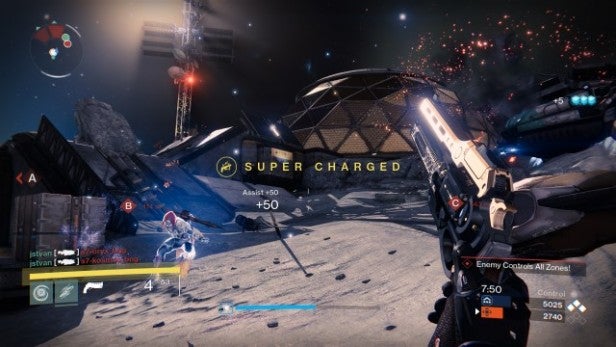
Even in the early stages, there’s something about the combat that just clicks. You’ll have two weapons at first – some kind of pistol or automatic rifle in the first slot, and a shotgun, slow-charge burst weapon or sniper rifle in the second. Using these basic tools you’ll cheerfully go to work on the Hive and Fallen. Before long, you’ll become as intimate with the types and tactics of your enemies as you were with Halo’s Covenant. You’ll get used to which ones charge you, which ones cloak and sneak, which ones are the Elite-style heavy hitters, and which stand in for the Brutes. You’ll learn how to adapt to different situations, and how to deal with a rush of Thralls or Fallen Vandals in entrenched positions.
Get through the first few hours, and the game opens up. You’ll become more powerful, but then so will your enemies. And as the action moves from Earth to the Moon and then to Venus, you’ll find the atmosphere and pacing changing all the time. If the earthly sections are reminiscent of Halo and Halo: Reach, then parts of the Moon missions bring to mind Doom and Doom 2, with gothic underground structures and demonic bosses, and a nasty tendency to swamp you with wave after wave of aggressive enemies. Venus throws in a whole new foe, the Vex, and has a vibe that’s part Halo, part Mass Effect. There’s some stunning scenery to view and some great spaces to explore, and all the time Bungie uses them to stage challenging fights against credible foes.
See also: PS4 tips and tricks
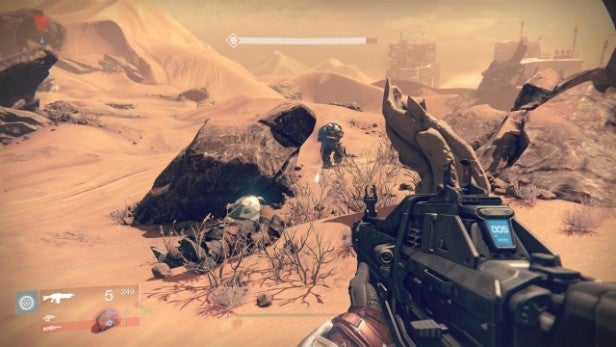
Destiny’s story missions have their issues, not least a tendency to over-use the ‘defend this spot while your ghost does something’ objective, but the minute-to-minute gunplay consistently feels great. It might not have Halo’s bevy of eccentric Covenant weaponry, but the assault rifles, pulse rifles, hand cannons etc. have their own distinct characters, and while the application of level-requirements and vast damage ratings to weapons doesn’t make a whole lot of narrative sense, that doesn’t make it any the less satisfying when you find a pulse rifle that blasts through Hive Knights like a sharp knife through a crab shell.
And whatever the naysayers might say, Destiny still has its share of big, epic moments. You’ll survive them not by playing it safe, but by trying something daring and unexpected. You’ll scrape through thrilling battles by the very skin of your teeth.
The combat is superb, and with each new planet and each new area that opens up, there’s always something that makes you want to go further; to tackle just one more mission and find out what’s in store. The clincher, however, is the upgrade cycle. Destiny plays generous with its loot, and once you’ve got that new helmet, been given a new rifle, unlocked that new ability or upgraded what you’ve got, it’s really, really hard to resist the temptation to dive back in and try it out. Forget WoW; Destiny comes close to Diablo in its compulsive upgrading, and the fact that better armour tends to look noticeably more awesome than average armour only makes the pull that much stronger.
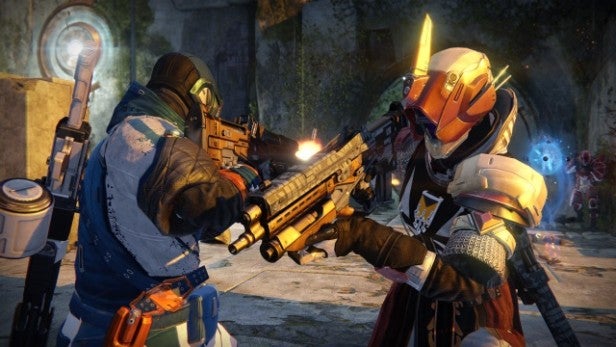
It’s not hard to have great production values when your budget runs into hundreds of millions, but you really can see – and hear – where the money has been spent. Destiny doesn’t just have cutting-edge technology, with some of the finest effects and lighting you can see in any FPS, but the art to match. Time after time you’ll see scenes and vistas that could have come straight from one of those beautifully airbrushed sci-fi art books that were big in the mid-1980s. And, like Halo, it’s a game where sound and music matters. From the sweeping orchestral themes and incidental music to the high-drama score that kicks in for a major battle, it all adds to the atmosphere.
Destiny’s biggest strength – and sometimes biggest weakness – is that it’s an experience better shared than had alone. Played solo, Destiny’s story missions are still a match for those you’d find in the majority of modern shooters, but the magic only really kicks in when you work through them with a friend, tackling waves after wave of a Fallen onslaught together, or creeping through an creepy and ancient Hive temple, covering each other’s backs. Playing together also fixes one of the biggest bugbears for solo play: a stinginess with checkpoints when you’re in one of the darkness-inflicted no respawn zones. On your own, death can mean repeating the same sequence of battles until you get it right. With a friend, you can keep restoring the other player. As long as one of you survives, the fight goes on.
In fact, you don’t even need to know the other person. Some of the best times I’ve had playing Destiny have been in Strikes – the longer, more challenging missions where you join forces with two other Guardians to take on a particularly difficult foe. For all that Strikes are formulaic and their targets damage-dealing, bullet-sponge gits, there’s something about working together to defeat the common foe that seems to bring out the best in Destiny players. The sense of elation when a boss goes down is incredible. If this is just a teaser for the game’s six-player raids, then the endgame cannot come quite soon enough.
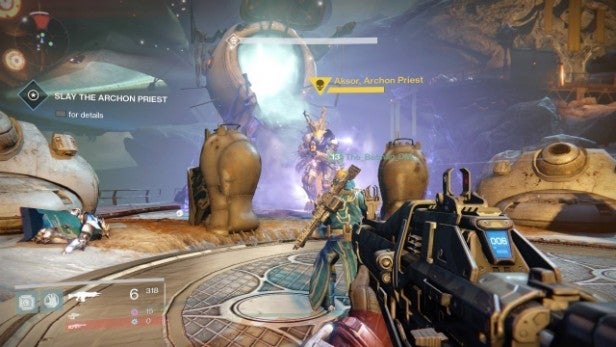
Destiny does a great job of mixing solo play and multiplayer, keeping you in a shared world with other players for much of a mission, then quietly instancing you off alone or with your Fire Team for the major beats. However, it could do a better job of making ad-hoc alliances into Fire Teams. Fire Teams are set friends-only by default, and the methods of joining other players to a Fire Team are a little opaque. It’s easy enough to invite a friend or simply jump in their game, but more players would happily work through the story missions together if Bungie made things just a little more intuitive – or even added a matchmaking option.
When you don’t want to make friends, there’s always The Crucible. Up to now I haven’t been convinced by Destiny’s competitive mode; with only four play modes it feels a little bare bones by current standards, and old-fashioned by comparison with Killzone: Shadow Fall or Titanfall. With the full release, though, I’m beginning to warm to it. It’s fast-paced, the team deathmatch modes are surprisingly addictive, the maps seem varied and smartly laid-out, while the addition of Guardian powers and vicious melee strikes give it a different feel to Halo or CoD.
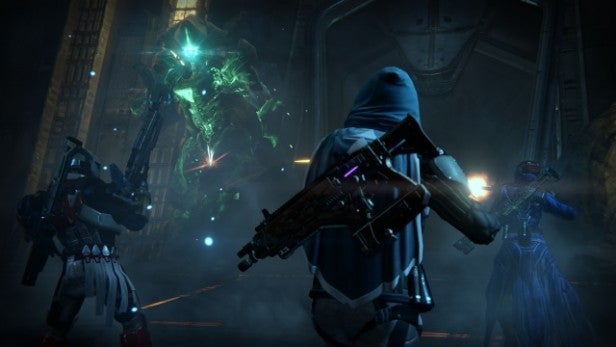
Destiny also does a better job than Halo 4 of integrating its competitive mode with the main campaign, with Crucible-specific bounties that can help you level faster, and Crucible rewards that can net you useful arms and armour. We’re also seeing the first competitive events, with their own bonus gear to be won. Competitive action still isn’t Destiny’s strongest point, but you can’t describe it as a weakness, either. It feels part and parcel of the game.
There’s always a temptation to complain about what’s missing from Destiny – the weird artificial barriers that stop you exploring portions of the game world, the paucity of emotes, the lack of any meaningful social interaction in Guardian HQ, The Tower. Yet Destiny succeeds in creating a platform for epic sci-fi run and gun adventure, in merging its FPS and MMO elements, and in making all that something you can share. And if it’s not always great at telling stories, it gives you all the elements you need to make your own. Personally, I’ll be playing it for months to come. It might well be your destiny to join me.
Read more: Best games 2014

